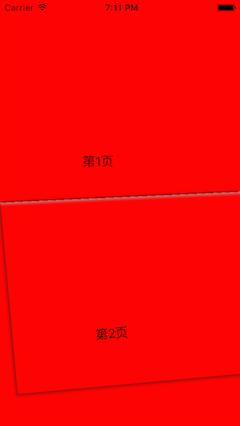實現iOS圖片等資源文件的熱更新化(四): 一個最小化的補丁更新邏輯
簡介
以前寫過一個補丁更新的文章,此處會做一個更精簡的最小化實現,以便於集成.為了使邏輯具有通用性,將剝離對AFNetworking和ReativeCocoa的依賴.
這麼做的意義
先交代動機和意義,或許應該成為自己博客的一個標准框架內容之一,不然以後自己需要看著,也不過是一堆干癟的代碼.基本的邏輯圖,如上!此處,我就從簡!
從簡的原因有3:
補丁更新,狀態可以設計的很復雜,就像開頭那篇文章提到的那樣,但是我感覺沒多大必要,至少在我們的App中; 我想演示一個相對完整的邏輯,但是又不想耗費太多的時間構建場景; 從簡後的方案,簡單但夠用了,至少目前針對我們的項目來說;所以說:這篇文章的意義,其實是在於簡化已有的熱更新代碼,越簡單越好維護.
基本思路
App啟動時,判斷特定的服務器接口所返回的圖片url是否為最新,判斷方式就是比對返回值中的md5字段與本地保存的資源的url是否一致; 如果圖片資源有更新,則下載解壓到指定的緩存目錄,初步打算以資源文件的md5來劃分文件夾,來避免沖突; 讀取圖片時,優先從緩存目錄讀取,緩存目錄不存在再從ipa資源包中讀取;下面就一步一步來實現了.
App啟動時,判斷有無最新圖片資源
此處主要涉及到的可能的技術點:
1. 如何用基礎的網絡類庫發送網絡請求?
先簡單封裝一個函數來獲取,用到了block.block經常用,但到現在都記不太清形式,大都是從其他處copy下,然後改改參數.記不住,也懶得記!
- (void)fetchPatchInfo:(NSString *) urlStr completionHandler:(void (^)(NSDictionary * patchInfo, NSError * error))completionHandler
{
NSURLSessionConfiguration * defaultConfigObject = [NSURLSessionConfiguration defaultSessionConfiguration];
NSURLSession * defaultSession = [NSURLSession sessionWithConfiguration: defaultConfigObject delegate: self delegateQueue: [NSOperationQueue mainQueue]];
NSURL * url = [NSURL URLWithString:urlStr];
NSURLSessionDataTask * dataTask = [defaultSession dataTaskWithURL:url
completionHandler:^(NSData * data, NSURLResponse * response, NSError * error) {
NSDictionary * patchInfo = [NSJSONSerialization JSONObjectWithData:data options:0 error:&error];;
completionHandler(patchInfo, error);
}];
[dataTask resume];
}
基於block,調用的代碼也就很簡答了.
[self fetchPatchInfo: @"https://raw.githubusercontent.com/ios122/ios_assets_hot_update/master/res/patch_04.json"
completionHandler:^(NSDictionary * patchInfo, NSError * error) {
if ( ! error) {
NSLog(@"patchInfo:%@", patchInfo);
}else
{
NSLog(@"fetchPatchInfo error: %@", error);
}
}];
好吧,我承認AFNetworking用習慣了,好久沒用原始的網絡請求的代碼了,有點low,莫怪!
2. 如何校驗下載的文件的md5值,如果你需要的話?
開頭那篇文章鏈接裡,有提到.核心,其實是在於下載文件之後,md5值的計算,剩余的就是字符串比較操作了.
注意要先引入系統庫
#include
/**
* 獲取文件的md5信息.
*
* @param path 文件路徑.
*
* @return 文件的md5值.
*/
-(NSString *)mcMd5HashOfPath:(NSString *)path
{
NSFileManager * fileManager = [NSFileManager defaultManager];
// 確保文件存在.
if( [fileManager fileExistsAtPath:path isDirectory:nil] )
{
NSData * data = [NSData dataWithContentsOfFile:path];
unsigned char digest[CC_MD5_DIGEST_LENGTH];
CC_MD5( data.bytes, (CC_LONG)data.length, digest );
NSMutableString * output = [NSMutableString stringWithCapacity:CC_MD5_DIGEST_LENGTH * 2];
for( int i = 0; i < CC_MD5_DIGEST_LENGTH; i++ )
{
[output appendFormat:@"%02x", digest[i]];
}
return output;
}
else
{
return @"";
}
}
3. 使用什麼保存與獲取本地緩存資源的md5等信息?
好吧,我打算直接使用用戶配置文件,
NSString * source_patch_key = @"SOURCE_PATCH"; [[NSUserDefaults standardUserDefaults] setObject:patchInfo forKey: source_patch_key]; patchInfo = [[NSUserDefaults standardUserDefaults] objectForKey: source_patch_key]; NSLog(@"patchInfo:%@", patchInfo);
補丁下載與解壓
此處主要涉及到的可能的技術點:
1. 如何基於圖片緩存信息來找到指定的緩存目錄?
問題本身有些繞口,其實我想做的就是根據補丁的md5,放到不同的緩存文件夾,如補丁md5為 e963ed645c50a004697530fa596f180b,則對應放到 patch/e963ed645c50a004697530fa596f180b 文件夾.封裝一個簡單的根據md5返回緩存路徑的方法吧:
- (NSString *)cachePathFor:(NSString * )patchMd5
{
NSArray * LibraryPaths = NSSearchPathForDirectoriesInDomains(NSLibraryDirectory, NSUserDomainMask, YES);
NSString * cachePath = [[[LibraryPaths objectAtIndex:0] stringByAppendingFormat:@"/Caches/patch"] stringByAppendingPathComponent:patchMd5];
return cachePath;
}
使用時,類似這樣:
NSString * urlStr = [patchInfo objectForKey: @"url"];
[weak_self downloadFileFrom:urlStr completionHandler:^(NSURL * location, NSError * error) {
if (error) {
NSLog(@"download file url:%@ error: %@", urlStr, error);
return;
}
NSString * cachePath = [weak_self cachePathFor: [patchInfo objectForKey:@"md5"]];
NSLog(@"location:%@ cachePath:%@",location, cachePath);
}];
2. 如何解壓文件到指定目錄?
如果需要安裝 CocoaPods ,建議使用 brew:
brew install CocoaPods
解壓本身推薦 SSZipArchive 庫,一行代碼搞定:
[SSZipArchive unzipFileAtPath:location.path toDestination: patchCachePath overwrite:YES password:nil error:&error];
3. 在什麼時候更新本地的緩存資源的相關信息?
建議是在下載並解壓資源文件到指定緩存目錄後,再更新補丁的相關緩存信息,因為這個信息,讀取圖片時,也是需要的.如果刪除某個補丁,按照目前的設計,一種比較偷懶的方案就是,在服務器上放上一個新的空資源文件就可以了.
NSString * source_patch_key = @"SOURCE_PATCH";
[[NSUserDefaults standardUserDefaults] setObject:patchInfo forKey: source_patch_key];
讀取圖片功能擴展
此處主要涉及到的可能的技術點:
1. 如何用基礎的網絡類庫下載文件?
依然是要封裝一個簡單函數,下載完成後,通過block傳出文件臨時的保存位置:
-(void) downloadFileFrom:(NSString * ) urlStr completionHandler: (void (^)(NSURL *location, NSError * error)) completionHandler
{
NSURL * url = [NSURL URLWithString:urlStr];
NSURLSessionConfiguration * defaultConfigObject = [NSURLSessionConfiguration defaultSessionConfiguration];
NSURLSession * defaultSession = [NSURLSession sessionWithConfiguration: defaultConfigObject delegate:self delegateQueue: [NSOperationQueue mainQueue]];
NSURLSessionDownloadTask * downloadTask =[ defaultSession downloadTaskWithURL:url
completionHandler:^(NSURL * location, NSURLResponse * response, NSError * error)
{
completionHandler(location,error);
}];
[downloadTask resume];
}
2. 如何判斷bundle中是否含有某文件?
可以使用 fileExistsAtPath,但其實使用 -pathForResource: ofType: 就夠了,因為找不到資源問加你時,它返回nil,所以我們直接調用它,然後判斷返回是否為 nil 即可:
NSString * imgPath = [mainBundle pathForResource:imgName ofType:@"png"];
3. 將代碼如何與原有的imageNamed:邏輯合並?
不需要初始復制到緩存目錄 + 初始請求最新的資源補丁信息 + 代碼遷移合並 + 接口優化
相對完整的邏輯代碼
注意,按照目前的設計,就不需要初始把原來ipa中的bundle復制到緩存目錄了;當緩存目錄中沒有相關資源時,會自動嘗試從ipa中的bundle讀取,bundle約定統一使用 main.bundle 來簡化操作,
類目,對外暴露兩個方法:
#import
@interface UIImage (imageNamed_bundle_)
/* load img smart .*/
+ (UIImage *)yf_imageNamed:(NSString *)imgName;
/* smart update for patch */
+ (void)yf_updatePatchFrom:(NSString *) pathInfoUrlStr;
@end
App啟動時,或在其他合適的地方,要注意檢查有無更新:
- (BOOL)application:(UIApplication *)application didFinishLaunchingWithOptions:(NSDictionary *)launchOptions {
// Override point for customization after application launch.
/* fetch pathc info every time */
NSString * patchUrlStr = @"https://raw.githubusercontent.com/ios122/ios_assets_hot_update/master/res/patch_04.json";
[UIImage yf_updatePatchFrom: patchUrlStr];
return YES;
}
內部實現,優化了許多,但也算不上復雜:
#import "UIImage+imageNamed_bundle_.h"
#import
@implementation UIImage (imageNamed_bundle_)
+ (NSString *)yf_sourcePatchKey{
return @"SOURCE_PATCH";
}
+ (void)yf_updatePatchFrom:(NSString *) pathInfoUrlStr
{
[self yf_fetchPatchInfo: pathInfoUrlStr
completionHandler:^(NSDictionary *patchInfo, NSError *error) {
if (error) {
NSLog(@"fetchPatchInfo error: %@", error);
return;
}
NSString * urlStr = [patchInfo objectForKey: @"url"];
NSString * md5 = [patchInfo objectForKey:@"md5"];
NSString * oriMd5 = [[[NSUserDefaults standardUserDefaults] objectForKey: [self yf_sourcePatchKey]] objectForKey:@"md5"];
if ([oriMd5 isEqualToString:md5]) { // no update
return;
}
[self yf_downloadFileFrom:urlStr completionHandler:^(NSURL *location, NSError *error) {
if (error) {
NSLog(@"download file url:%@ error: %@", urlStr, error);
return;
}
NSString * patchCachePath = [self yf_cachePathFor: md5];
[SSZipArchive unzipFileAtPath:location.path toDestination: patchCachePath overwrite:YES password:nil error:&error];
if (error) {
NSLog(@"unzip and move file error, with urlStr:%@ error:%@", urlStr, error);
return;
}
/* update patch info. */
NSString * source_patch_key = [self yf_sourcePatchKey];
[[NSUserDefaults standardUserDefaults] setObject:patchInfo forKey: source_patch_key];
}];
}];
}
+ (NSString *)yf_relativeCachePathFor:(NSString *)md5
{
return [@"patch" stringByAppendingPathComponent:md5];
}
+ (UIImage *)yf_imageNamed:(NSString *)imgName{
NSString * bundleName = @"main";
/* cache dir */
NSString * md5 = [[[NSUserDefaults standardUserDefaults] objectForKey: [self yf_sourcePatchKey]] objectForKey:@"md5"];
NSString * relativeCachePath = [self yf_relativeCachePathFor: md5];
return [self yf_imageNamed: imgName bundle:bundleName cacheDir: relativeCachePath];
}
+ (UIImage *)yf_imageNamed:(NSString *)imgName bundle:(NSString *)bundleName cacheDir:(NSString *)cacheDir
{
NSArray * LibraryPaths = NSSearchPathForDirectoriesInDomains(NSLibraryDirectory, NSUserDomainMask, YES);
bundleName = [NSString stringWithFormat:@"%@.bundle",bundleName];
NSString * ipaBundleDir = [NSBundle mainBundle].resourcePath;
NSString * cacheBundleDir = ipaBundleDir;
if (cacheDir) {
cacheBundleDir = [[[LibraryPaths objectAtIndex:0] stringByAppendingFormat:@"/Caches"] stringByAppendingPathComponent:cacheDir];
}
imgName = [NSString stringWithFormat:@"%@@3x",imgName];
NSString * bundlePath = [cacheBundleDir stringByAppendingPathComponent: bundleName];
NSBundle * mainBundle = [NSBundle bundleWithPath:bundlePath];
NSString * imgPath = [mainBundle pathForResource:imgName ofType:@"png"];
/* try load from ipa! */
if ( ! imgPath && ! [ipaBundleDir isEqualToString: cacheBundleDir]) {
bundlePath = [ipaBundleDir stringByAppendingPathComponent: bundleName];
mainBundle = [NSBundle bundleWithPath:bundlePath];
imgPath = [mainBundle pathForResource:imgName ofType:@"png"];
}
UIImage * image;
static NSString * model;
if (!model) {
model = [[UIDevice currentDevice]model];
}
if ([model isEqualToString:@"iPad"]) {
NSData * imageData = [NSData dataWithContentsOfFile: imgPath];
image = [UIImage imageWithData:imageData scale:2.0];
}else{
image = [UIImage imageWithContentsOfFile: imgPath];
}
return image;
}
+ (void)yf_fetchPatchInfo:(NSString *) urlStr completionHandler:(void (^)(NSDictionary * patchInfo, NSError * error))completionHandler
{
NSURLSessionConfiguration *defaultConfigObject = [NSURLSessionConfiguration defaultSessionConfiguration];
NSURLSession *defaultSession = [NSURLSession sessionWithConfiguration: defaultConfigObject delegate: nil delegateQueue: [NSOperationQueue mainQueue]];
NSURL * url = [NSURL URLWithString:urlStr];
NSURLSessionDataTask * dataTask = [defaultSession dataTaskWithURL:url
completionHandler:^(NSData *data, NSURLResponse *response, NSError *error) {
NSDictionary * patchInfo = [NSJSONSerialization JSONObjectWithData:data options:0 error:&error];;
completionHandler(patchInfo, error);
}];
[dataTask resume];
}
+ (void) yf_downloadFileFrom:(NSString * ) urlStr completionHandler: (void (^)(NSURL *location, NSError * error)) completionHandler
{
NSURL * url = [NSURL URLWithString:urlStr];
NSURLSessionConfiguration *defaultConfigObject = [NSURLSessionConfiguration defaultSessionConfiguration];
NSURLSession *defaultSession = [NSURLSession sessionWithConfiguration: defaultConfigObject delegate:nil delegateQueue: [NSOperationQueue mainQueue]];
NSURLSessionDownloadTask * downloadTask =[ defaultSession downloadTaskWithURL:url
completionHandler:^(NSURL *location, NSURLResponse *response, NSError *error)
{
completionHandler(location,error);
}];
[downloadTask resume];
}
+ (NSString *)yf_cachePathFor:(NSString * )patchMd5
{
NSArray * LibraryPaths = NSSearchPathForDirectoriesInDomains(NSLibraryDirectory, NSUserDomainMask, YES);
NSString * cachePath = [[[LibraryPaths objectAtIndex:0] stringByAppendingFormat:@"/Caches"] stringByAppendingPathComponent:[self yf_relativeCachePathFor: patchMd5]];
return cachePath;
}
@end
現在,加載圖片的代碼更簡單了:
UIImage * image = [UIImage yf_imageNamed:@"sub/sample"];
self.sampleImageView.image = image;
如果熱更新生效,運行看到的應該是一個錘子圖片:
後記
我覺得,這篇文章最大的特點是,完整記錄了一次優化解決問題的過程;示例代碼看起來前後有些不太統一,是因為: 我不是先有了方案再寫博客,而是借助博客本身來梳理思路,簡化邏輯!如此,寫博客,就不單單是一個耗時的分享知識的過程,更成為了一個幫助自己思考的有力工具!贊!!!




